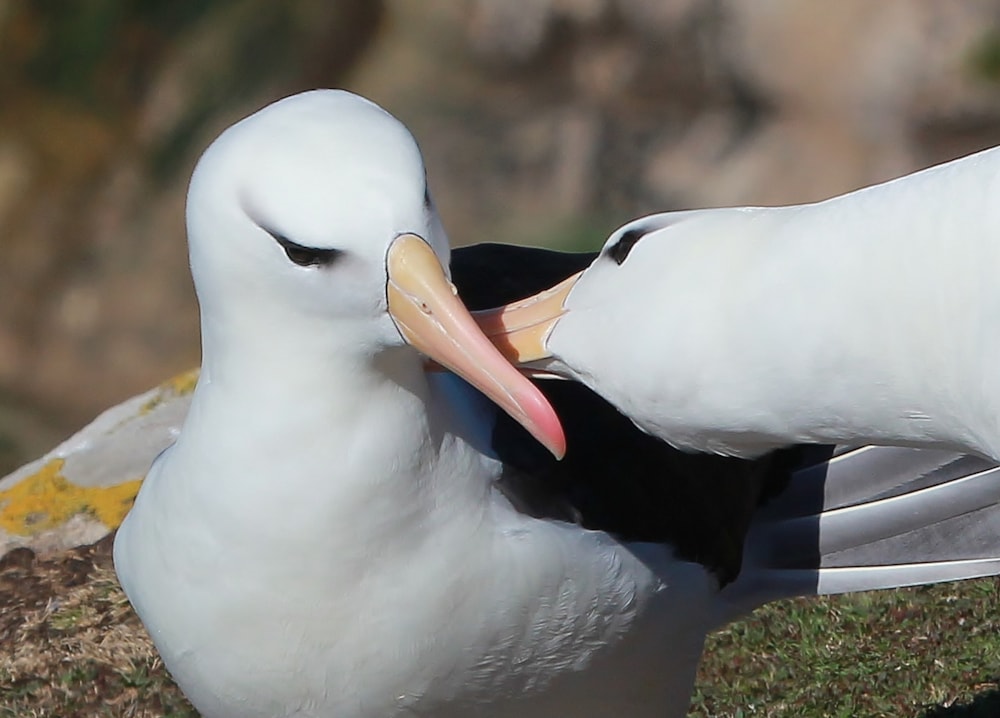Albatrosses, famed for their loyal monogamy, are splitting up more often – with global heating a possible factor.
In a new Royal Society study, researchers say climate change and warming waters are pushing Black-browed Albatross break-up rates higher. Usually, after choosing a partner, only 1-3% would separate – but in the years with unusually warm water temperatures, that average consistently rose, with up to 8% of couples splitting up.

Albatross pairs often mate for life, but this loyalty is seemingly being tested by warmer waters (Richard Collier).
For seabirds, warmer waters mean less fish, less food and a harsher environment. Fewer chicks survive. The birds' stress hormones increase. They are forced farther afield to hunt.
The study looked at a population of 15,500 breeding pairs in the Falkland Islands over 15 years. The researchers were surprised to learn that warmer waters were associated with unusually high rates of albatross couples splitting up, even when the lack of fish were accounted for.
Two possible reasons for this have been floated – one that warming waters were forcing the birds to hunt for longer and fly further. If birds then failed return for a breeding season, their partners may move on with someone new. Added to that, when waters are warmer and in harsher environments, albatross stress hormones increase.
Reference
Ventura F, Granadeiro J P, Lukacs P M, Kuepfer A & Catry P. 2021. Environmental variability directly affects the prevalence of divorce in monogamous albatrosses. Procceedings of the Royal Society B. DOI: 10.1098/rspb.2021.2112


